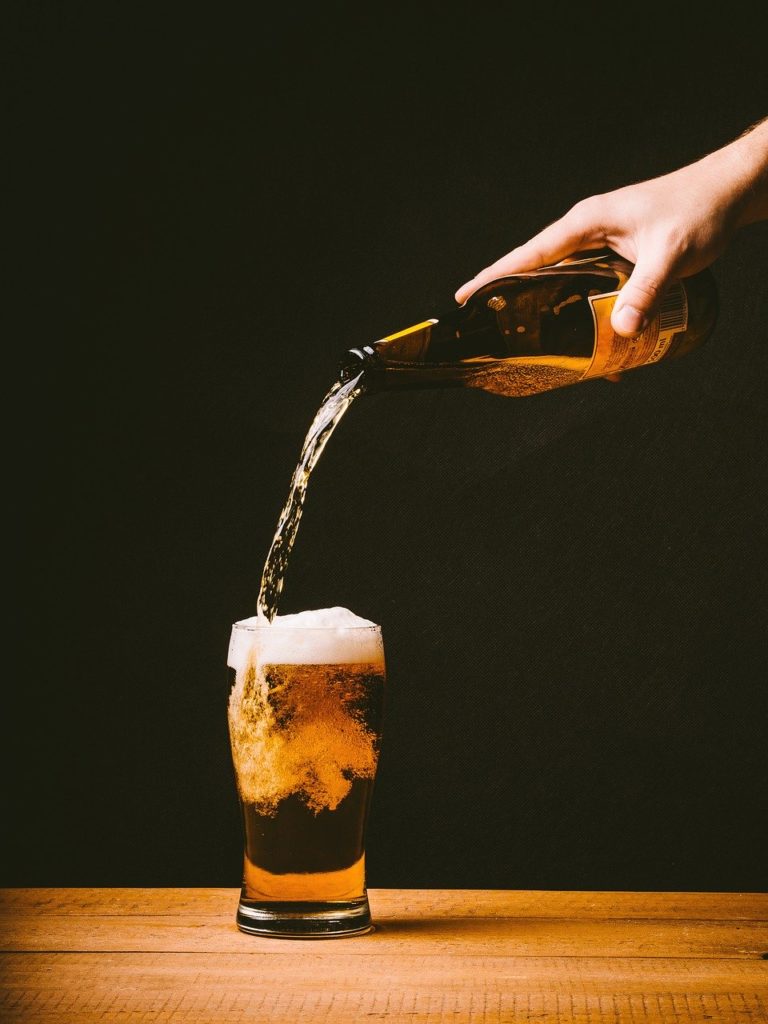Well, the best example is Guinness. Be observant while you pour the brew into a pint glass and see how it behaves. Do the Irish stout bubbles sink to the bottom instead of floating to the top like in all carbonated drinks?
According to a study published by Irish mathematicians in 2012, the shape of glass contributes greatly to the outcome of a stout post-pour. The study revealed that stout bubbles act differently depending on their position in the glass. From the middle, bubbles rise to the surface without hindrance, but the bubbles on the sloped walls of a pint glass drag and clog together.
Bubbles get to the top, then the crowd pushes some liquid to the side, which pushes the bubbles on the wall side to the bottom. The process creates a continuous current of beer pushing down bubbles then back up again after hitting the bottom. Note that the pint glass shape contributes to this mesmerizing bubble effect in Guinness.


What is the theory behind bubble sinks in a stout?
Without a 101 experience with the bubble effect in a stout, it may sound like an illusion. However, stouts are a little different from other beers with bubble behavior. The shape of a glass and stout composition are behind the bubbling cascade.
All beers have carbon dioxide as a main component, which explains the big bubbles that form large bubbles on the sides of the glass when a carbonated drink is poured. Besides the carbon dioxide in beer, Guinness also contains nitrogen gas. Nitrogen bubbles form slowly and end up smaller and take longer to float like other gases.
Bubble size is not a theory to explain why nitrogen bubbles sink, but the gas is less dense than beer, meaning they will take more time to rise to the top. Also, the pint glass is a motivator for the sinking bubbles. A typical glass is narrow at the bottom and broader towards the top.
When bubbles form at the bottom of the glass, they drag some liquid through the center, rising to the top through the middle, creating a rich bubble with low density. Once the current gets to the top, the fluid circulates back to the bottom, dragging any nitrogen bubbles on the glass’s sides.
In Summary
Practice the Guinness bubble effect by ordering the stout, not in a typical glass but a cylindrical glass. When you pour the drink, it will be more than an optical illusion, and they will be amused! Tilt the glass to an angle, then pour the stout, then watch the bubbles sink and rise to the top in a continuous motion.
Stouts have nitrogen gas besides carbon dioxide, which is why their behavior in a glass varies from other carbonated drinks. Those who have not experienced this reaction may find it a myth, but it is real. You can also find out more about nitrogen gas, how it behaves, and its density and the whole bubble cascade might sound so peculiar after all.
Read More: 17 Foods That Start With Q
